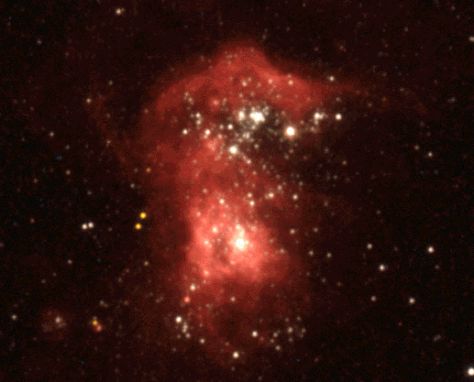Bright Stars, Dim Galaxy

Explanation:
These two clusters of bright, newly formed stars
surrounded by
a glowing nebula lie 10 million light-years away in the dim,
irregular
galaxy cataloged as NGC 2366.
The
Hubble
Space Telescope image shows that the youngest cluster,
the bottom one at about 2 million years old,
is still surrounded by the gas and dust cloud it condensed from, while
powerful stellar winds from the stars
in the older cluster at the top (4-5 million years old),
have begun to clear away its central areas giving the entire nebula
an apparent inverted hook shape.
Compared to the sun, the stars in these clusters
are massive and
short lived.
The brightest one, near the tip of the hook, is a rare Luminous Blue Variable
with 30 to 60 times the mass of the sun - similar to the erruptive
Eta Carinae in our own Milky Way.
Stars this massive
are extremely variable.
A comparison with ground based images indicates that in three
years this star's brightness increased by about 40 times making it currently
the brightest star in
this
dim galaxy.
Authors & editors:
Robert Nemiroff
(MTU) &
Jerry Bonnell
(USRA)
NASA Web Site Statements, Warnings,
and Disclaimers
NASA Official: Jay Norris.
Specific
rights apply.
A service of:
LHEA at
NASA /
GSFC
& Michigan Tech. U.

